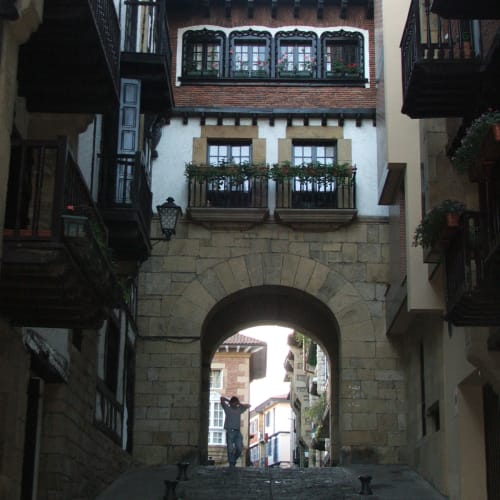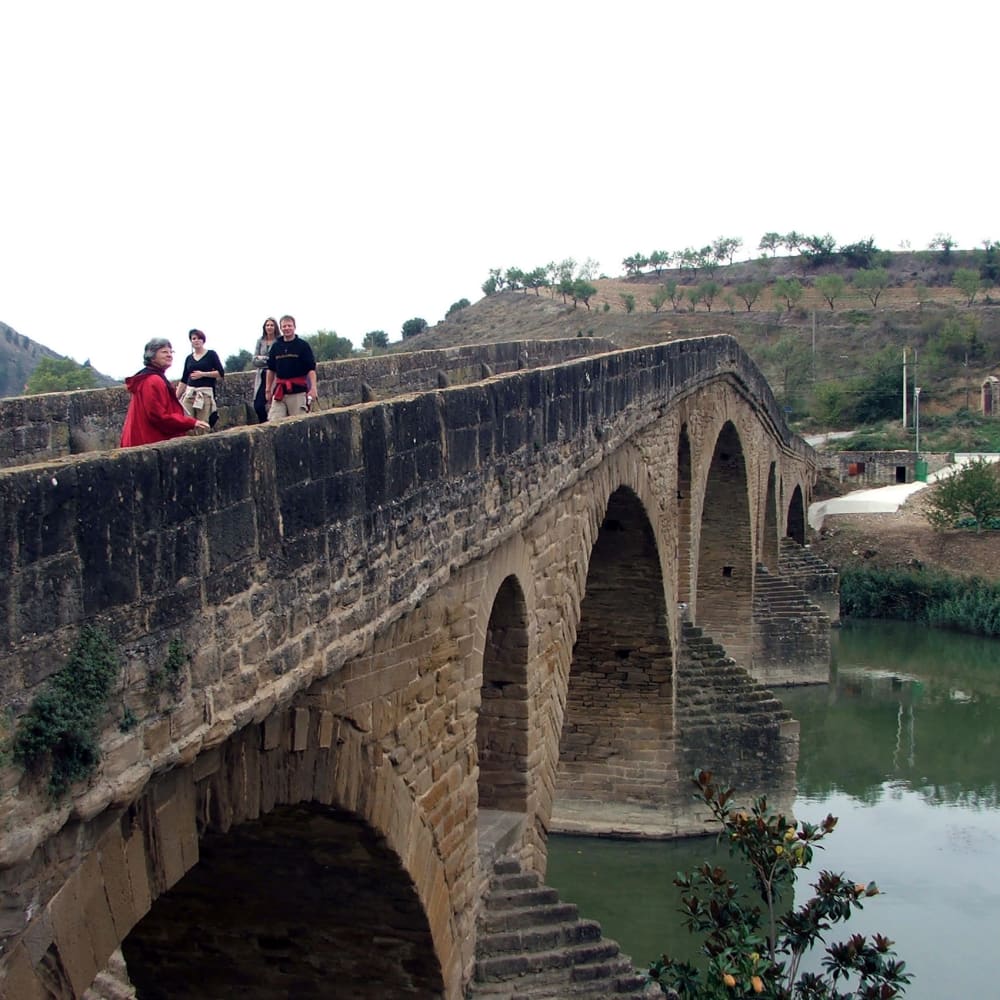Three Kings Sale - Up to 40% Off! Shop Sale
Discovering Rustic Spain
Don Harris | January 2014




Some of you may have been reading the evocative NY Times best seller The Telling Room by Michael Paterniti. It is the narrative of a sophisticated 21st century American writer who dreamed of living in a simpler time, and took his young family with him to the village of Guzmán, close to Maderuelo in the province of Segovia. The author became intellectually and emotionally involved with the local men, many of whom would spend hours talking while they sat around in a room that harbored their rustic and famous cheese.
Last year, my wife Ruth and I decided to find some rustic rural village that would be far away from the cities and the tourism and the trappings of the 21st century. Of course, Ruth and I could not accomplish anything like The Telling Room experience in a couple of weeks of driving - the book’s author made a commitment of months or even years. But we hoped by drawing on our past experiences, supplemented by various accounts on the Internet, that we could select the perfect place 'to pitch our tent.'
We chose the hilltop village of Maderuelo, enclosed by defensive walls that rise above a rushing river. There, we hoped to spend three or four days amongst the local people in order to get a real flavor of what their life and values might be, and, if all went as planned, experience their Semana Santa observance. In ancient times, Celtiberians inhabited these lands, followed by Romans and then Muslims, until the latter part of the 12th century, when triumphant knights settled the area with fellow Christians to secure their gains. This is a land filled with watchtowers, battlements and castles, all vital during the era of the Reconquista in which Moorish domination was challenged and defended. While there are no longer invading armies, these battlements remain, sort of like a collective unconsciousness of the people.
To reach Maderuelo, we crossed the successor to a Roman-era bridge and followed the road around the surrounding battlements until we found a medieval stone arch on the far side which gave us entry to the town. The ambiance was amazing and gave the feeling that we were lost in a medieval village. The puebla was truly silent with no evidence of human activity. It was getting late and we needed to locate the place where we were to lay our heads.
Our friend Jamie, who lives in the Basque Country, had done some preliminary sleuthing, found a phone number for a bed and breakfast, and contacted a lady who assured us that we could stay in her home for two or three nights – or as long as we wanted. She had also inquired as to what we might like for dinner, since there were no restaurants or other public establishments in the town proper.
However, with no street signs, signs on the buildings, nor people in the streets, it seemed there was no way for us to find this woman. We decided to seek the central cobblestone plaza. In its heyday, Maderuelo had more than a dozen churches; now the number has dwindled to only one, Santa Maria, located on the edge of this Plaza Mayor. I tried the door of the church but it was locked (I later read there was a mummified girl inside). So I rested my back by sitting on the stoop of an extreme 'fixer-upper' building with a crooked handwritten sign saying se vende - for sale. It would take an extraordinary realtor to move this property before it collapsed.
Finally, we saw a truck that was blocking much of the narrow street. I asked whether he knew of Marta and Jorge Padilla, the innkeepers. He said, "Of course, she’s right down there!" and pointed down the curved cobblestone walled street where everything looked the same. Fortunately for us, our host heard the talking in the street, and stepped out to greet us with an umbrella, since it was drizzling by that time.
And what a delight she and her husband turned out to be. It seems that he was an accomplished IT technician, a person in great demand throughout Spain because of his valuable skills. But after a while he started re-evaluating his life and wondered what the purpose was for him to drive and problem solve from city to city all over Spain as a slave of electronics. His wife also yearned for a simpler life away from all the frenzy and chaos of a big city like Madrid. When she was a little girl, she used to visit her grandmother who lived, of all places, in Maderuelo! And after investigating what was available in the rustic town of her youth, Marta and Jorge left the modern world and moved into the medieval town of her grandmother to run a bed and breakfast. They seem very pleased about their decision.
We spent the night in the ancient structure that had been restored by the two of them as a labor of love. There were beautiful rugged beams, narrow stairs climbing here and there, and the bedrooms were cozy. Down below, on the lowest level of an essentially vertical building, was the place where we were served our dinner: simple hardy fare, rustic bread, a plate of fruit and good company – all surrounded by rugged stone and ancient rafters. Of course we did have electricity; and most remarkably we were provided Wi-Fi (which is pronounced 'wee fee' in Spanish). But, when you think about it, of course that follows: Jorge was skilled in the world of IT and did not shun it all: taking advantage of Wi-Fi would be a drawing card for their bed and breakfast.
But the thing that struck me the most in Maderuelo, and something most of us hardly ever think of, is that it was silent: no internal combustion engines, no radios and TVs, virtually no people. There were not even roosters to welcome us at dawn in this rural puebla! I suppose it goes without saying that our quest for a medieval Semana Santa procession was misplaced in a village only numbering one hundred and fifty people.
Undaunted, we climbed into our car and drove further into the isolated area of rural Segovia and by happenstance came upon a wonderful little town called Allyón during market day. People from the countryside had come to town to buy and sell food and sundries. As in medieval times, stalls were spread out in the Plaza Mayor. I have never seen such spectacular huge fresh cauliflowers, or lettuce, beets, turnips, chickens and tubs full of olives and artisan cheeses, as well as unfortunate skinned rabbits. Under the granite colonnades, which bounded one side of the plaza, we noticed an inviting hotel restaurant where we savored a dinner of roast suckling pig and lamb for which the region of Segovia is famous.
When we finished our meal and stepped out into the Plaza we were greeted by Maria, a local girl who works for the tourism office there. Her English was quite good and her warmth and enthusiasm was even better. In the brief time remaining she invited us into St Michael’s, her Romanesque parish church which was adjacent to the open air market. Within it, she showed us beautifully made pasos – with life-sized figures for the town’s Semana Santa processions.
Our search was tantalizingly close to fruition in the village of Allyón, but unfortunately by then we had run out of time and had to return to Madrid to fly home. On the way to Madrid, we did stop by the sublime walled city of Ávila and participated in a beautiful Pascua, Easter Mass, celebrated by a warm and friendly archbishop. The choir was composed of a dozen or so local men, not professionals but lovers of church music.
So our quest was not in vain, it just turned out differently than we had planned. Although we did not find any rustic medieval procession, which probably only exists in my imagination (unless it would have been in Allyón!), we were with good generous people, making our trip very much a holy week.
Tu amigo,
Don

